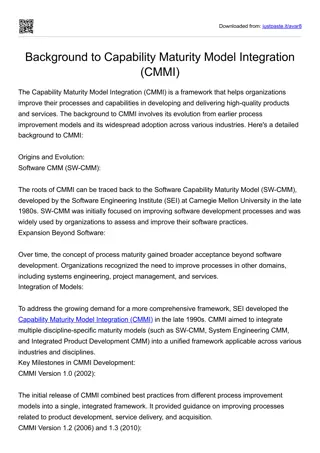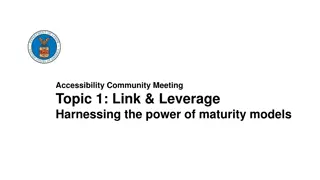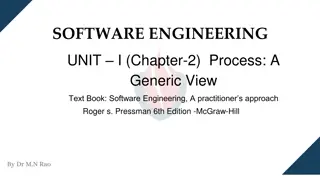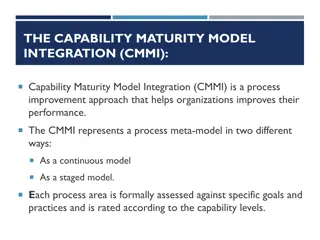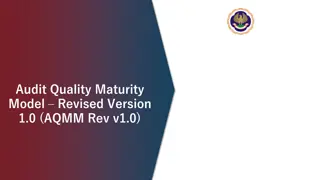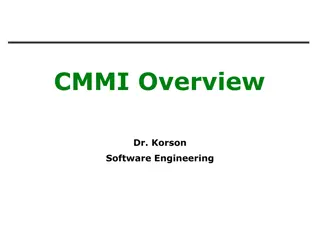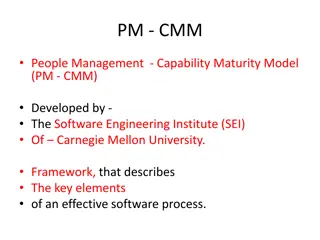Understanding SEICMM - Software Engineering Institute Capability Maturity Model
The SEICMM, also known as the Capability Maturity Model (CMM), is a framework developed by the Software Engineering Institute (SEI) to enhance an organization's software development process. It consists of five maturity levels to assess and improve processes, from initial ad hoc activities to optimizing for continuous improvement. By measuring software process capability, organizations can select contractors and enhance their internal processes using methods such as capability evaluation and software process assessment.
Download Presentation

Please find below an Image/Link to download the presentation.
The content on the website is provided AS IS for your information and personal use only. It may not be sold, licensed, or shared on other websites without obtaining consent from the author. Download presentation by click this link. If you encounter any issues during the download, it is possible that the publisher has removed the file from their server.
E N D
Presentation Transcript
Software Engineering Institute Capability Maturity Model (SEICMM) The Capability Maturity Model (CMM) is a procedure used to develop and refine an organization's software development process. The model defines a five-level evolutionary stage of increasingly organized and consistently more mature processes. CMM was developed and is promoted by the Software Engineering Institute (SEI), a research and development center promote by the U.S. Department of Defense (DOD). Capability Maturity Model is used as a benchmark to measure the maturity of an organization's software process.
Methods of SEICMM Capability Evaluation: Capability evaluation provides a way to assess the software process capability of an organization. The results of capability evaluation indicate the likely contractor performance if the contractor is awarded a work. Therefore, the results of the software process capability assessment can be used to select a contractor. Software Process Assessment: Software process assessment is used by an organization to improve its process capability. Thus, this type of evaluation is for purely internal use. SEI CMM categorized software development industries into the following five maturity levels. The various levels of SEI CMM have been designed so that it is easy for an organization to build its quality system starting from scratch slowly.
Level 1: Initial Ad hoc activities characterize a software development organization at this level. Very few or no processes are described and followed. Since software production processes are not limited, different engineers follow their process and as a result, development efforts become chaotic. Therefore, it is also called a chaotic level. Level 2: Repeatable At this level, the fundamental project management practices like tracking cost and schedule are established. Size and cost estimation methods, like function point analysis, COCOMO, etc. are used. Level 3: Defined At this level, the methods for both management and development activities are defined and documented. There is a common organization-wide understanding of operations, roles, and responsibilities. The ways through defined, the process and product qualities are not measured. ISO 9000 goals at achieving this level. Level 4: Managed At this level, the focus is on software metrics. Two kinds of metrics are composed.
Product metrics measure the features of the product being developed, such as its size, reliability, time complexity, understandability, etc. Process metrics follow the effectiveness of the process being used, such as average defect correction time, productivity, the average number of defects found per hour inspection, the average number of failures detected during testing per LOC, etc. The software process and product quality are measured, and quantitative quality requirements for the product are met. Various tools like Pareto charts, fishbone diagrams, etc. are used to measure the product and process quality. The process metrics are used to analyze if a project performed satisfactorily. Thus, the outcome of process measurements is used to calculate project performance rather than improve the process. Level 5: Optimizing At this phase, process and product metrics are collected. Process and product measurement data are evaluated for continuous process improvement.




